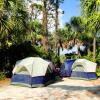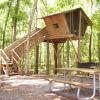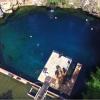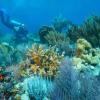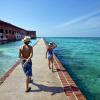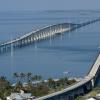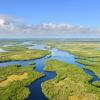By Diane Daniel
Departing Port Richey’s waterfront district by boat, you’ll pass working shrimp trawlers, elegant homes, condominium buildings and clumps of mangrove trees.
If you’re lucky, you’ll even be treated to cavorting dolphins, a common sight for people cruising the scenic waterway toward the Pithlachascotee River (locally called the Cotee), which flows into the Gulf of Mexico.
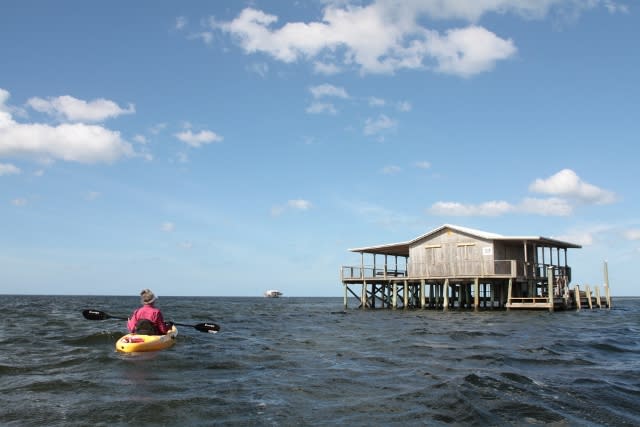
As you round the corner into the open waters, you might think you’re seeing a mirage – wooden structures on pilings that appear to be standing far out in the water. Your eyes aren’t playing tricks on you – you’re seeing the “stilt houses,” the pride of Pasco County.
“People are very curious about them,” said Captain Dave, one of the regular Gill Dawg Marina guides for sunset cruises around the stilt homes. “Everyone wants to know what are they, who owns them and can they be rented.”
The eight structures that dot the gulf are lovely reminders of old Florida, when working fishermen built camps above the water, both as a place to store the mullet they caught and to seek shelter during storms. All are privately owned and have been grandfathered in by the state Legislature, which holds the leases to the land. No new houses can be built, though damaged ones can be repaired depending on the remaining structure. And, sorry, they cannot be rented, although a few have changed hands over the years.
While the exact history of the stilt houses is unknown, their timeline can be read on this website, curated by Pasco historian and high school teacher Jeff Miller.
The first houses were thought to have been erected between 1916 and 1918. At one point, 24 stilt homes filled the skyline, but in 1968, Hurricane Gladys destroyed most of them. At that point, the state began to control the structures, pinpointing the locations and holding leases to the underwater land.
Johnny Cash frequently visited one of the camps, owned by the parents of his wife, June Carter Cash, and was said to have at times been accompanied by his friend the Rev. Billy Graham.
While the public is not allowed onto the homes, boaters can cruise around the camps to admire them. We circled around a few of them by kayak, renting boats from Gill Dawg. It took about an hour from the marina to reach the closest camp and we had the time and energy to paddle around three of the most southerly structures. A nice break before returning to the marina was a stop at nearby Durney Key, a small island where boaters like to congregate.
One of the first things we noticed was the abundance of plastic line around the houses and on the roofs – to keep the cormorants and other birds from gathering there. The houses have no electricity or plumbing and all are quite basic, more like shelters than homes. Each has an outhouse, and the state requires the use of a chemical toilet.
Local resident Cheryl Swartsel, has been going to stilt houses since she was a child, and the family she married into has owned the rights to a stilt house since the 1950s. They’re now on their third structure.
“We have play times and work days – it takes a lot to maintain these places,” she said. “But we are really blessed. The other week I was on the dock and saw three four-foot snook and a green turtle floating by.”

Ways to access the stilt houses
At Gill Dawg, you can rent kayaks, standup paddleboards, jet skis, jon boats, and pontoon boats or take one of their weekend sunset cruises (some with dinner included), which includes views of the stilt houses. Gill Dawg’s bar and grill are open daily, offering sandwiches and full meals, with waterfront views.
Gill Dawg Marina, Tiki Bar and Grill
5419 Treadway Drive
Port Richey
gilldawg.com
727-842-1070


